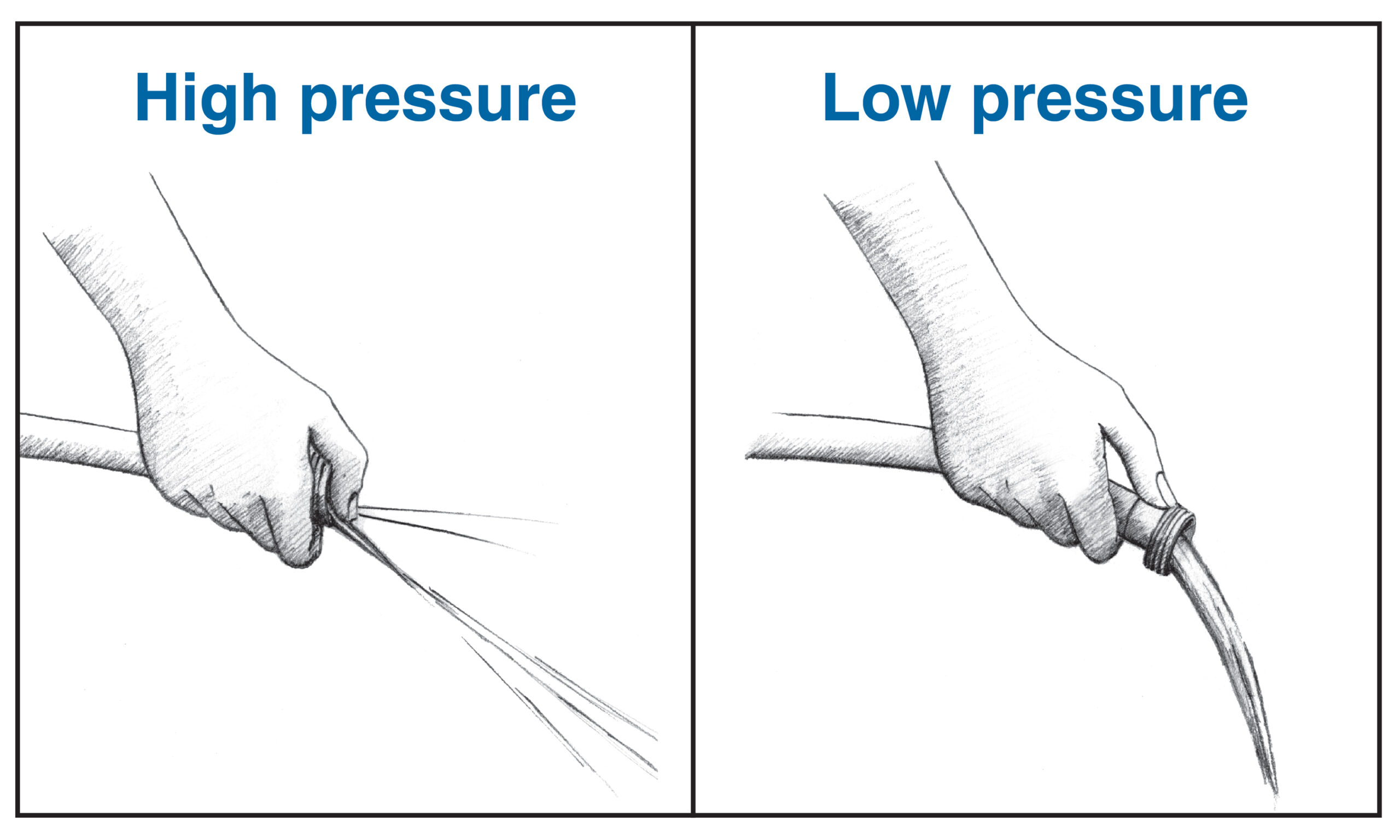
Psychological Health and Safety is not a Program, it’s a Process
Don’t you have enough on your plate? In a tragic irony, do you not feel that sometimes people keep adding more items to your already full plate? At times, the important things stay just out of arm’s reach while the urgent and pressured items stay in your way.
Sometimes we make the simple complicated.
A garden hose, without the nozzle, has a steady stream of water coming through it. A finger over part of the end of the hose increases the pressure of the same amount of water. This is the Bernoulli principle. Using this principle in the workplace adds more to the to-do list but not always growth in the long term. To spray off dirt, the finger on the end helps. However, this same pressure on plants erodes the dirt required for the plant to grow.
This happens to many leaders with things that need to be done. At times the pressure needs to be increased to get things checked off the list, rinsed off. At other times to provide the right support to allow things to grow and get rooted means less pressure.
This is one of the greatest challenges when it comes to providing Psychological Health and Safety in the workplace.
To react means getting things going creates a sudden flurry of activity, the pressure is on, because there is top of mind awareness. The frequent result is that while the series of programs, training, and speakers were provided and people felt motivated for that moment of time, things gradually drift back to what it was before. There is often an increase of cynicism as the effect was ‘they just did that to check some things off their list’.
To have a workplace culture where people want to work means to grow, not try to hatch it. Clarifying these approaches is the difference between a cake where the good things are baked into it. The other is merely putting a tasty icing on a cake that takes horrible.
If the leadership is clear on their ethos and motivation, then the approach is self-evident and visible to all. Yet sadly, there is a fact here that many organizations skip over.
The leader can only take people to a place he/she is willing to go.
I know it is not very mature, but like the child’s game ‘Monkey see – Monkey Do’. If you, as a leader, are not willing to model and practise PH&S for yourself then it is just putting good icing on a bad cake. The result is that people think and feel the pressure to get things going, yet the pressure is eroding the very soil to grow the good things.
There is a vital truth here, this is an internal brand issue – if your organization’s brand values are not supported internally, it will be difficult to retain, engage, and/or recruit people. Most people believe their brand is external only, but if you can’t make your brand believable internally, you will never make it believable externally. It has to be more than something on a website, something posted around the workplace, as that only adds bad icing to a lousy cake.
Look in a mirror, how are you practising some of the core elements of PH&S in your workplace?
Since there are 13 factors, there should be one you can start with, so you lead well. If you do not know what these are, just email me and I will send the list, and what it looks like if it’s lacking.
When was the last time you demonstrated appreciation to another?Without a motive or agenda, just to say thank you.
Have you asked people to ask others how they would describe the workplace n a non-physical way? Please do not ask them yourself as it often comes across like you are stroking an ego.
What are you doing to address the demands on your plate? Who are your workplace teammates?
I believe that everyone wants to work in a culture where they belong, have a purpose, and feel supported. It only happens through real relationships with real values.
People tend to become what we are encouraged to become, never what we are nagged to become.
What are you encouraging?
Presented by

Archives
Categories
- Attraction and Recruitment
- Benefits
- Celebrating Success and Recognition
- Change Management
- Conflict Resolution and Coaching
- Culture
- Diversity, Equity and Inclusion
- Emotional Intelligence
- Employee Engagement
- Employee Performance
- Labour Disruption
- Mentoring
- OMHRA activities
- OMHRA Events
- Psychological health and safety of the HR professional
- Recruitment
- Recruitment and Retention
- Retention
- Uncategorized
- Unique ideas for recruiting in a tight job market
- Wellness
Recent Posts
- How Leadership Development Coaching Provides Better Outcomes
- Better Leadership: Focus on a Coach Approach
- Creating a Psychologically Safe Workplace
- Group Health Insurance – The Impact of Preferred Pharmacy Networks on Employees’ Mental Health
- Provide Real Support For Your Mid-Career Team’s Psychological Resilience

